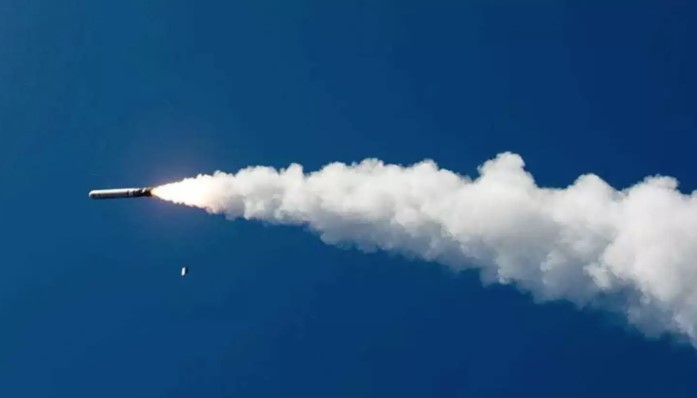NATO officials are raising serious concerns after reports that Russia has completed the development of its nuclear-powered Burevestnik cruise missile. This missile, also known within NATO as the SSC-X-9 Skyfall, has long been viewed as one of the most worrying projects in Russia’s weapons program. Now, with Moscow confirming successful tests earlier this month, the issue has moved to the top of NATO’s security discussions.
Burevestnik Missile Raises Fresh Fears Across NATO
The Burevestnik missile carries a small nuclear reactor, giving it near-unlimited range. It can stay airborne for long periods, change direction mid-flight, fly over 900 km/h, and approach targets from hard-to-detect angles. These traits make it difficult to track or stop, creating new challenges for NATO defense systems.
Alongside the Burevestnik, concerns have grown about the Russian SS-X-28 Oreshnik, a medium-range missile capable of reaching up to 5,500 kilometers. It can carry different types of warheads, including nuclear ones. Belarus plans to deploy the Oreshnik in December, presenting it as a response to Western actions. NATO officials say this timing adds tension to an already strained security environment.
Despite warnings, some experts are skeptical about the Burevestnik’s strategic impact, noting that nuclear-powered missiles are highly complex and risky to operate. However, Russia’s confirmation of successful tests keeps NATO on high alert, as the missile’s unusual design introduces new uncertainties to European and global security.
Why the Burevestnik Missile Stands Out in Modern Warfare
The Burevestnik missile is raising concern because it works differently from most cruise missiles. Traditional missiles rely on fuel, which limits how far and long they can fly. The Burevestnik, however, has a miniature nuclear reactor, allowing it to stay airborne far longer and take unusual routes. It could circle for hours or approach targets from unexpected angles, making it harder for defense systems to track.
Its mobility also makes it more difficult to monitor. Unlike larger systems that need fixed launch sites, the Burevestnik can be moved and hidden, adding to the challenge for other countries trying to predict its deployment or tests.
Trump threatens NATO with ultimatum: no unity, no sanctions on Russia
Earlier this month, Moscow confirmed successful tests, though details were limited. This has prompted NATO to reassess the missile’s risk, describing it as one of the most unusual and complex weapons in recent years.
Adding to the tension is Russia’s SS-X-28 Oreshnik missile. With a long range and flexible warhead options, it can reach deep into Europe. Belarus is expected to deploy the Oreshnik soon, placing the system closer to NATO borders. Combined, these developments have heightened security concerns, as both missiles introduce unpredictable capabilities that challenge current defense systems.
Growing Security Concerns Across Europe
The reports about both Russian missiles have arrived at a time when European security is already under strain. Over the past year, several NATO countries have reported rising military activity near their borders, as well as an increase in drone sightings and unusual aircraft movements. These events have created a sense of unease, even though none have led to open conflict.
The introduction of the Burevestnik and Oreshnik missile systems adds to this sense of uncertainty. NATO officials say the alliance must stay alert, given how these weapons could change the balance of defense planning. While the Burevestnik’s true capabilities remain partly unknown, the fact that it has passed successful testing is enough to cause concern.
The decision by Belarus to field the Oreshnik missile in December heightens the worries. Officials say this deployment could change the military landscape in Eastern Europe, placing more powerful weapons in a region where tensions are already high.
NATO’s drone wall begins — Poland and Romania deploy Merops to hunt Russian intruders
Some experts, however, believe that despite its unusual design, the Burevestnik may not offer the dramatic advantage some fear. They argue that nuclear-powered missiles face significant technical hurdles and safety challenges. But this has not eased NATO’s caution, especially since Russia’s confirmation of the tests has renewed questions about the missile’s real-world potential.
With both missile systems now part of discussions inside NATO, defense planners across Europe are watching developments closely. The combination of long-range capability, nuclear power, and unpredictable flight paths means the Burevestnik remains one of the most talked-about weapons in recent years.

